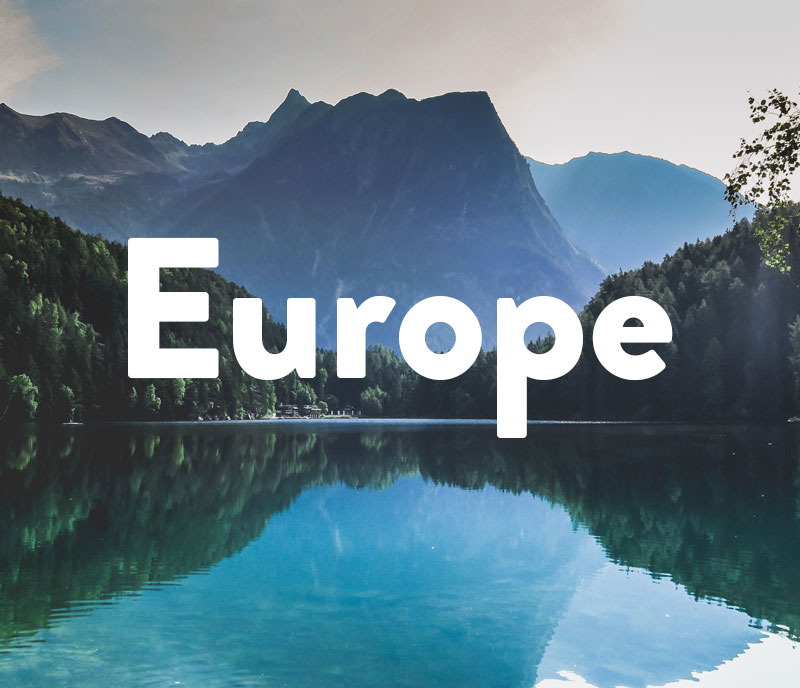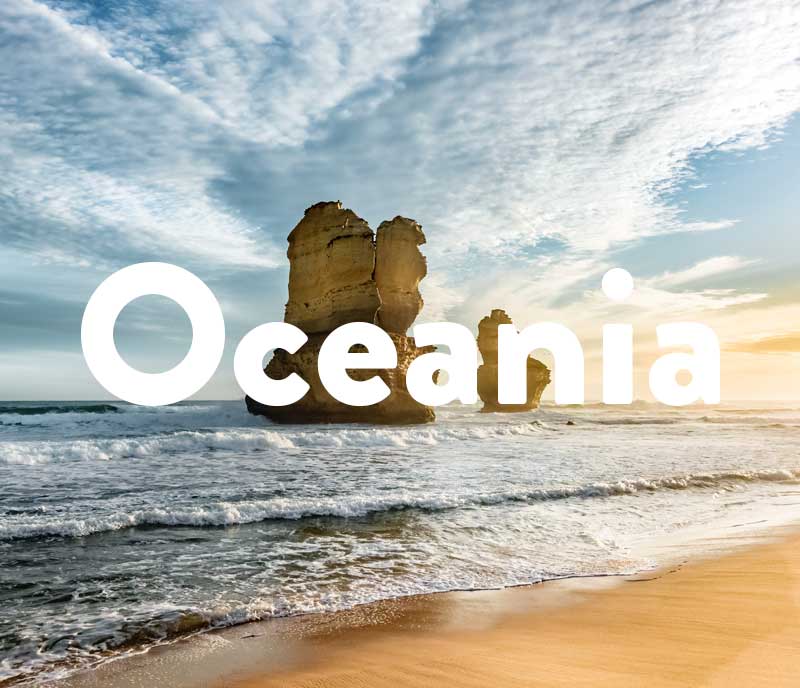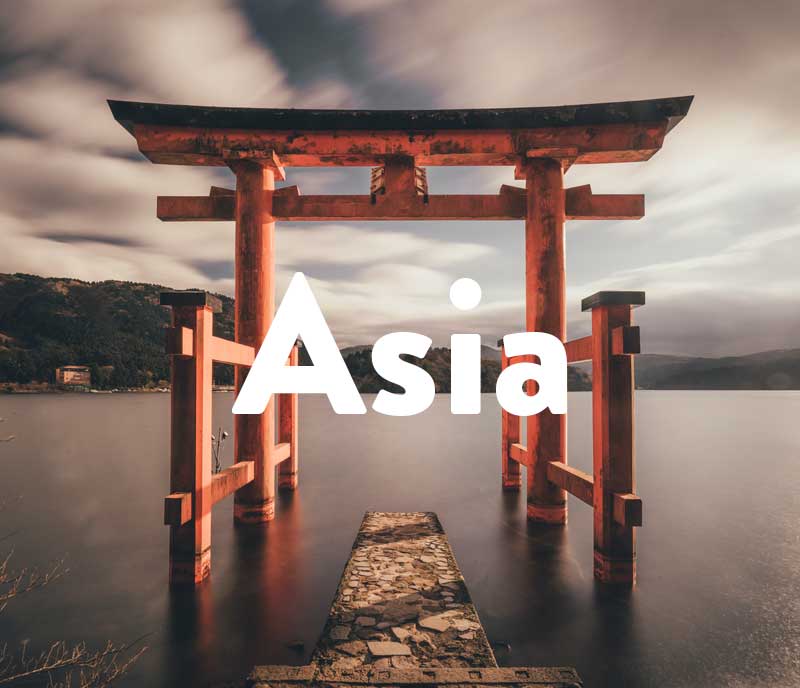Why do nearly ten million tourists flock to India every year? A wealth of historical sites, beautiful beaches, scenic mountain panoramas, wildlife adventures, meditative getaways, tasty culinary delights, and bustling modern cities guarantee visitors something for everyone. Whether you’re a first-time traveler or an “off the beaten path” veteran, read this guide to spark inspiration for your once in a lifetime trip to India.
Dive into our (free) travel guides below!
.
.
.
.
.
.
.
.
The Key Info
In southern Asia, India is bordered by the countries of China, Bhutan, Nepal, and Pakistan to its north, by Bangladesh and Myanmar (Burma) to its east, and by bodies of waters to the south, including the Bay of Bengal, the Arabian Sea, and Laccadive Sea.
The country has five vegetation zones, including tropical deciduous forest, tropical evergreen forest, mountain vegetation, thorny bushes, and mangrove forests. India has a total size of 3,287,263 sq km (1,269,219 sq mi), making it the seventh largest country in the world. Likewise, India has a total population of approximately 1,380,789,392 people, making it the second-largest population in the world or 17.7% of the world’s total population.
The capital of India is New Delhi where over 19 million Indians live in a city 42.7 sq km (16.5 sq mi) in size. Their official language is Hindi, but English is widely recognized as the official sub-language.
India in Numbers
- Population: 1,380,789,392
- Total size of the country: 3,287,263 sq km (1,269,219 sq mi)
- Capital city: New Delhi
- Currency: Indian rupee (INR)
- Language: Hindi and English
- Religion: Hindu (80%), Islam (13%), Christianity (2%), Sikhism (2%), Buddhist (1%), Jainism (0.4%), Other (1.6%)
The 5 Largest Cities in India
Although India is immense in size and population, travelers quickly discover that each city has a special charm all its own. The country’s largest five cities are:
1. Mumbai – Population: 12,691,836
is on the western coast of India, near the Arabian Sea. Rare sights and sounds will spoil travelers here with top sightseeing spots beginning with the Gateway of India and Elephanta Caves. Several Bollywood tours commemorate the film industry’s founding here.
2. Delhi – Population: 10,927.986
Delhi is in northern India, which contains its capital, New Delhi. You can see iconic sites here like the Bahai (Lotus) Temple. History buffs can visit Gandhi Smriti, the place Mahatma Gandhi visited before his assassination.
3. Bangalore – Population: 5,104,047
The second biggest city, Bangalore, is in southern India. The iconic Bangalore Palace inspired by the country’s colonial past greets you here along with the Tipu Sultan’s Palace and the roomy Lalbagh Botanical Garden.
4. Kolkata – Population: 4,631,392
Kolkata sits on the eastern part of India. The top places to visit in this city include the Victoria Memorial Hall museum and Mother Teresa’s resting place, Mother House.
5. Chennai – Population: 4,328,063
You’ll find Chennai on the south-eastern coast of India. While you’ll want to see its oldest temple, Kapaleeshwarar Temple, you can also soak up local culture at Georgetown Bazaar where locals trade everything from bangles to vegetables.
TOP Tourist Attractions
Out of all the countries you’ll visit in your life, India offers the widest variety. The country has the greatest contribution of ancient and modern sights and sounds. Whether you’re looking for historical treasures, sacred sites, or vibrant culture, here are the top tourist attractions in India.
1. The Gateway of India
One of India’s unique landmarks and Mumbai’s top tourist attraction, this monument marks King George V and Queen Mary’s visit to India. Look for the “Taj Mahal of Mumbai” on the waterfront in the Apollo Bunder area.
2. Amber Fort
Get a taste of 17th-century opulence at this Maharaja’s palace in Jaipur, a 27-minute drive from Hawa Mahal. Its sumptuous architecture, ornamental gardens, and rich history make this UNESCO World Heritage Site a must-see attraction.
3. Humayun’s Tomb
A majestic garden tomb of Mughal Emperor Humayun in Delhi is another UNESCO World Heritage Site that inspired the Taj Mahal. The equally beautiful gardens have plenty of secrets for you to explore.
4. Brihadeeswara Temple
Known as India’s “most fascinating temple,” the temple in Tamil Nadu is large and intricate. Maybe you will be the one to solve the mystery of how they built the structure.
5. The Taj Mahal
India’s most famous site and considered its most beautiful, this mausoleum complex in Uttar Pradesh in northern India built by the Mughal emperor Shah Jahan in 1632 honors his favorite wife, Mumtaz Mahal.
Best Time to Travel
Thanks to the country’s wide range of geography and climates, you can visit India practically throughout the year. However, the peak tourist season is usually between October to March when the climate is sunny and dry. You’ll also experience the sky at its bluest, especially in the northern areas of the country. Cooler weather rolls in around December and January. This is peak tourist season in beach towns like Goa, since the dry weather and mild temperatures make nightlife and beach parties more convenient and pleasant.
If you don’t mind the high humidity and thunderstorms, traveling to India in April and May results in plenty of attractive discounts if you want the best value.
Safety Tips
- Women – Stay safe even when traveling alone in India by staying in the major tourist areas, using the women’s compartment when taking the train, and never going out alone at night.
- LGBTs – India is welcoming of LGBT travelers. However, you must still take safety precautions, such as avoiding public displays of affection and staying at global brand hotels who will be more accommodating of LGBT guests. If you are traveling alone, use an LGBT tour operator who can provide a more specialized visit and security.
- BiPOC – All western travelers should be wary of scams, including unlicensed tour operators. Stay safe by taking taxis at night to and from your destination. Transportation booking services like Uber are available in India and safe to use.
Holidays in India
Holidays and festivals in India add more flavor, fun, and photo opportunities to your visit. Below are the country’s major holidays:
- January 26: Indian Republic Day
- January or February: Thaipusam
- March: Holi Festival
- April 2: Rama Navami
- April 14: Ambedkar Jayanti
- August 15: Independence Day
- October 2: Gandhi Jayanti (Gandhi’s Birthday)
- November: Pushkar Camel Fair
- October to December: Diwali
- October 25: Dussehra
For a full calendar of holidays recognized in the country, visit the Public Holidays India website.
Do I Need a Visa?
If you want to holiday in India, you can get an electronic visa (e-Visa) directly from the Indian government online. Citizens from most countries can get a visa for six months, more than enough time to see the country’s remarkable sights and sounds. After you receive your Electronic Travel Authorization online, you will get a visa entry stamp upon arrival. (https://indianvisaonline.gov.in/evisa/tvoa.html)
India’s Currency
The national currency of India is the Indian rupee (INR). Indian rupees come in the following banknotes: 5, 10, 20, 50, 100, 500, and 1,000 rupees. They also come in the following coin amounts: 1, 2, and 5 rupees and smaller 10, 25, and 50 paises.
Credit cards such as Visa and Mastercard are welcome, especially in major cities like New Delhi and Mumbai.
DOs and DON’Ts in India
| DO | DON’T |
| Bring a small gift such as a box of sweets or school supplies when invited to someone’s home or school. | Avoid leather items such as handbags, belts, wallets, and shoes, especially inside Hindu temples. Locals consider cows sacred. |
| Ask for permission before taking photos of people | Never offer to shake the hand of someone from the opposite sex unless invited. |
| Use hand sanitizer regularly when you can’t wash your hands. | Avoid drinking local tap water and brushing your teeth with it. Use bottled water for either activity. |
| Eat only freshly cooked food and drink only bottled mineral water. Anything else may make you ill. | Avoid unlicensed transportation. Hire licensed auto-rickshaws and taxis via prepaid booths. |
| Be sure to haggle to half the price offered when shopping at bazaars and roadside stalls. Bargaining is expected at these places. | Never give money to a homeless person unless you want to attract petty thieves. |
| Greet others with the traditional “Hello” in India or “namaste” (nah-mah-stay) or the more formal “namaskar” (nah-mah-scar). | Avoid traveling in the northern and north-eastern areas of India. They are dangerous to tourists. |
Must-Haves for Your India Packing List!
- While you can get many things in India as you do at home, it isn’t budget friendly. Here are some must-haves for your India packing list:
- Bring your most comfortable and durable walking shoes. You will frequently find yourself on rough roads that will place plenty of wear and tear on your footwear.
- Don’t wear open-toe footwear. Instead, bring stronger sandals or flip-flops to withstand the bumpy roads. The locally made sandals are typically easy to break.
- Bring toiletries, sunscreen, and insect repellent. While they have local equivalents, they will be of a lower quality.
- Bring a light sleeping bag to use on trains and at lower-quality hotels.
- Use a backpack to pack everything. Unless you have first-class accommodations, you might need to walk from your taxi to your hotel, making traditional luggage inconvenient.
- Travelers in India use locks and cables to keep their luggage safe from thieves.
Secret Tips from Bloggers
Here are a few secret tips to help you make the most of your trip to India:
- With ten trips to India over ten years, Asher and Lyric have insider know-how to help others prepare for their own trip. They have 201 India travel tips like shopping only at stores with a “Fixed-Rate” sign.
- Is this your first trip to India? You’ll want to meet Dave and Deb from Canada who share essential information newbies to India must know, including how to best interact with the locals.
TOP 7 Instagrammable places
- #tajmahal with 1.5M posts
- #indiagate with 281k posts
- #spitivalley with 241k posts
- #gatewaytoindia with 199k posts
- #charminar with 188k posts
- #hawamahal with 175k posts
- #redfort with 163k posts
- #qutubminar with 148k posts
Fun facts about India
- While India is best known for its large population, Bollywood, and the Taj Mahal, its people also have a wide assortment of culture, cuisine, traditions, and history that give it colorful fun facts like:
- You’ll find the wettest inhabited place on earth at Mawsynram village in the Khasi Hills, which receives the highest recorded average rainfall in the world.
- At 40% of the world’s supply, India is the biggest producer of mangoes in the world. Fortunately, they are also its largest consumer.
- “Snakes and Ladders” might be your favorite childhood board game. Few know it was created in India in 2 AD. In addition, India gave us Chess.
- Bollywood is the popular name of the Hindi film industry. It began in Mumbai with films only shown in India. Today, it is the largest film industry internationally.
Don’t hesitate to send a postcard from India. The country has 155,015 post offices, the most in the world. (Or use MyPostcard to send one from your phone straight to your recipient’s door!)
Building a bucket list? Read our latest posts!
- Dresden and Saxon Switzerland – The perfect weekend trip
- Vacation in Carinthia: Experience the sunny side of the Austrian Alps
- Craft Unforgettable Postcards: Say Goodbye to Writer’s Block with AI (Coming soon!)
- Discovering the Charm of San Antonio: 5 Hidden Must-Visit Places
- Off to a Texas adventure: Our trip to San Antonio, Fredericksburg and Bandera – Part 2







